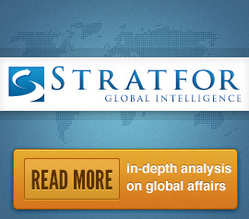Several years into a Chinese economic slowdown, the Latin American economies that relied on China to buy up their key exports are feeling the pain. With less hard currency coming in, governments across the region are rapidly readjusting their spending plans and preparing to govern in an environment in which they will have fewer resources to secure their key constituents' political loyalties.
The Role of Geography
Ever since commodity prices began dropping several years ago, much has been written about how slow economic growth and potential political instability will plague Latin America in coming years. But what will Latin America as a whole look like in a decade as a result of the Chinese economic downturn? What ideologies will dominate in a continent that over the past decade veered toward leftist populism? And what issues will define its relationship with the United States, the hemisphere's undisputed hegemon?
The region's geopolitics hold the beginning of an answer. The first step is to view Latin America's geographic regions and countries as a series of divided islands rather than a united entity. Unlike Western Europe, where the relative absence of natural obstacles eventually gave rise to interconnected political entities, South America is bisected by the dense Amazon rainforest and divided lengthwise by the nearly insurmountable Andean mountain range. Latin American colonies were divided even before the collapse of the Spanish Empire in the Americas more than two centuries ago. After independence, this disconnected geographic landscape created dozens of economies of wildly varying sizes often more linked by trade with partners outside the region than with each other. With few unbroken expanses of arable land and high transport costs across the forests and mountains, Latin America was simply not in a position to create capital on the scale of the United States or Western Europe. Consequently, even major Latin American states such as Brazil or Mexico remain highly reliant on inflows of cash from abroad to keep their economies afloat and rely on exports to China or the United States for a significant part of their foreign trade.

Unsurprisingly, the goal of forming institutions that can provide lasting political and economic unity has eluded Latin American statesmen. Numerous attempts have been made to unite the fractious region: Simon Bolivar's ill-fated 19th-century bid to unite South America, a similar attempt at uniting the Central American states into a federation and the more recent creation of separate economic blocs in Latin America. Yet the isolation created by geographic barriers has foiled leaders' attempts to unite the region's countries into a real economic or political union on the scale of the European Union or even the North American Free Trade Agreement. In recent history, the closest that Latin American states came to some sort of unity - besides regional trading blocs such as the Common Market of the South and the Pacific Alliance - was the wave of leftist populist governments that swept the continent beginning in the early 2000s. But after a decade of budgets and politics buoyed by high commodity prices, the raw realities of geopolitics are back with a vengeance.
The Shape of Governments to Come
We cannot define the exact nature of the national governments that will emerge during the next decade; short-term actions are less predictable than long-term trends, and attempting to forecast which people or parties will lead countries such as Brazil after its 2018 elections or Venezuela after its presidential election in 2019 is very risky. However, we have a rough idea of the shape these governments will take. With less revenue available to pacify restive populations, the new governments will likely be more economically pragmatic than their predecessors. This is not to say that populism as a means of governance in Latin America will subside; rather, rulers are likely to take more care in how they relate to their voters and the outside world.




